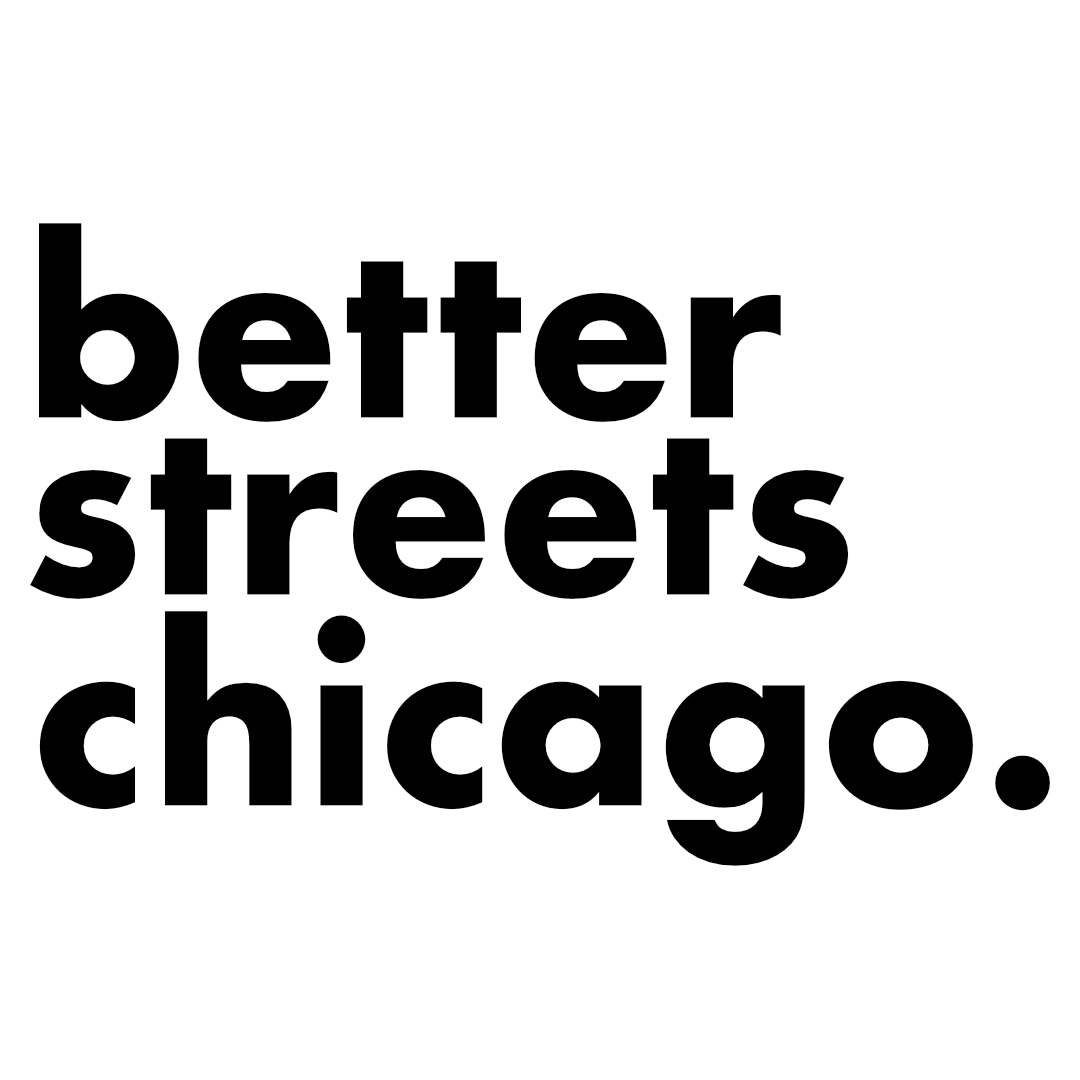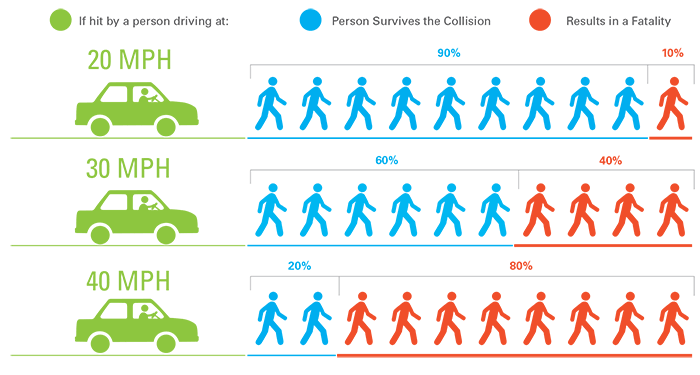Why Chicago must vote against raising the speeding ticket threshold
On Wednesday, July 20, the Chicago City Council will vote on whether to raise the threshold at which speed cameras start issuing tickets to speeding drivers from 6 mph above the posted speed limit to 11 mph over.
While supporters of raising the ticketable speed threshold argue the City is making an unfair and inequitable money grab, the lower limit – and speed cameras generally – have proven an effective tool for reducing driving speeds and increasing road safety for all users. The benefits of speed cameras are clear, but many opponents are correct to call out ongoing challenges.
We hear and understand the arguments of many people who oppose the speed cameras. Many are right to raise questions about their deployment and the disproportionately negative impact fines can have on low-income and working class people, particularly in Black and Brown communities. We agree that the City should not be deploying traffic cameras as a means of raising revenue rather than focusing on public safety benefits, but we do not agree that the solution is to raise the threshold at which tickets begin being issued to speeding drivers.
Higher speeds result in a higher likelihood of death
It is well-established that two factors play a significant role in whether a traffic crash turns deadly:
The size and weight of a vehicle
The speed it is being driven
The bigger and heavier a vehicle is and the faster it is being driven significantly increases the likelihood that a pedestrian, cyclist, or other vehicle passengers will be seriously injured or killed upon impact.
The Institute of Transportation Engineers has visualized this point clearly with the chart below.
Image source: San Francisco MTA Vision Zero Action Plan, February 2015
The chart illustrates how fatalities increase at an exponential rate as speed increases:
Drivers are unlikely to cause a fatality to a pedestrian or cyclist when traveling at or below 20 mph.
Increasing driving speeds from 20 to 30 mph increases the rate of crash fatalities of pedestrians and cyclists from 10% to 40%.
Increasing speeds from 30 mph to 40 mph, the fatality rate jumps from 40% to 80%.
None of this takes into account serious injury rates or the impact on drivers hit by other reckless drivers.
Who the increased ticket threshold hurts most
Raising the ticketable threshold from 6 mph to 11 mph over the posted speed limit will encourage drivers to operate vehicles fatally fast on almost any Chicago street. The posted speed limit on most City streets is 30 mph, which is moderately dangerous as-is; raising the ticketable threshold in practice raises the speed limit to the dangerously high speed of 40 mph.
Inequities can also be found in who is most impacted by traffic crashes. Black Chicagoans are killed by traffic violence at a rate five times higher than White residents and three times higher than Hispanic residents, according to City data. This is further reflected by the fact that 60% of all traffic crash related emergency room visits are made by Black residents.
It is disappointing that the City Council is considering this change as the City is experiencing a significant increase in traffic violence including the recent deaths of six residents walking or biking, including four Chicago youth ages 2 to 16 killed this summer. This disappointment is compounded considering traffic enforcement cameras are shown to work. According to a study reported on by WBEZ, the number of tickets issued by speed cameras has reduced over time, although the average ticketed speed has remained consistently over 11 mph. ProPublica has reported traffic enforcement cameras reduced injurious or fatal crashes by 15%. Likewise, Streetsblog Chicago has reported extensively on safer behavior shown by most drivers near traffic cameras.
Why the City should not raise the current speeding ticket threshold
We call on the City Council to retain the current threshold of issuing speeding tickets at 6 mph above the posted limit.
We do not do this lightly: we are well aware of the negative impact the current system has on communities – especially low-income, working class, and/or Black and Brown communities. We also recognize that Black and Latinx residents statistically face a significantly higher risk of traffic fatalities.
In addition to retaining the current threshold, we call on the City Council, CDOT, and Mayor Lightfoot to make a number of corresponding changes to how traffic enforcement cameras are used and funds are allocated, focusing on reducing the inequities of the current model while implementing changes to the makeup of our streets.
We call on the City Council to enact the following:
Establish a lower city-wide speed limit.
Guarantee all revenue generated from traffic enforcement cameras is dedicated to funding infrastructure that improves traffic safety and user behavior in high infraction and crash corridors through design – including building a city-wide network of dedicated barrier-protected bike lanes and connecting off-street trails and on-street paths, widening sidewalks, street pedestrianization, transit expansion, transit prioritization, and road diets that reduce traffic speed.
Establish transparent and consistent guidelines to be codified by ordinance governing when and where traffic enforcement cameras are used and how they are added or removed. This includes universal deployment near schools, parks, and other defined areas of concern; establishing clear metrics to determine the success or failure of a camera in improving desired safety outcomes; outlining improvements communities can pursue that would result in cameras being removed.
Make fines for violators more equitable by scaling fines to reflect potential risk (i.e., higher fines for higher speeds and more dangerous vehicle models), scale fines and fees based on number of violations, issuing warnings for the first two violations (three strike rule), scaling fees based on income, capping late fees on unpaid tickets or eliminating them entirely for low-income residents.
Establish a municipal bike, walk, and transit fund that ensures a dedicated and consistent amount of money is spent on maintaining and expanding pedestrian, bike, and transit infrastructure and services.
Install speed recorders to better inform drivers of their speed in areas where cameras are used to provide fair opportunities to adhere to driving rules.
Many of these recommendations are based on or taken directly from a UIC study to understand the impact of speed cameras, which the City commissioned. The City Council, Mayor’s office, and CDOT should act on these recommendations instead of passing policies that will make our streets more dangerous.
Chicagoans are understandably fed up with taxes, fines, and fees. Despite them going up and being expanded, we rarely see any public benefits through improved services or infrastructure. It is time for the City Council, Mayor’s Office, and CDOT to step up and act as leaders on this issue. Speed cameras can and should play an important role in maintaining safe streets for all users, but this must be met with fundamental reforms and investments in redesigning our streets to prioritize people and safety first.
How your alderperson voted
We launched an email campaign in response to this vote, and because of the collective advocacy of those fighting for safe streets many alders flipped their projected votes and we were successful in defeating this ordinance. Below you can take a look at who that campaign reached and how they voted.

